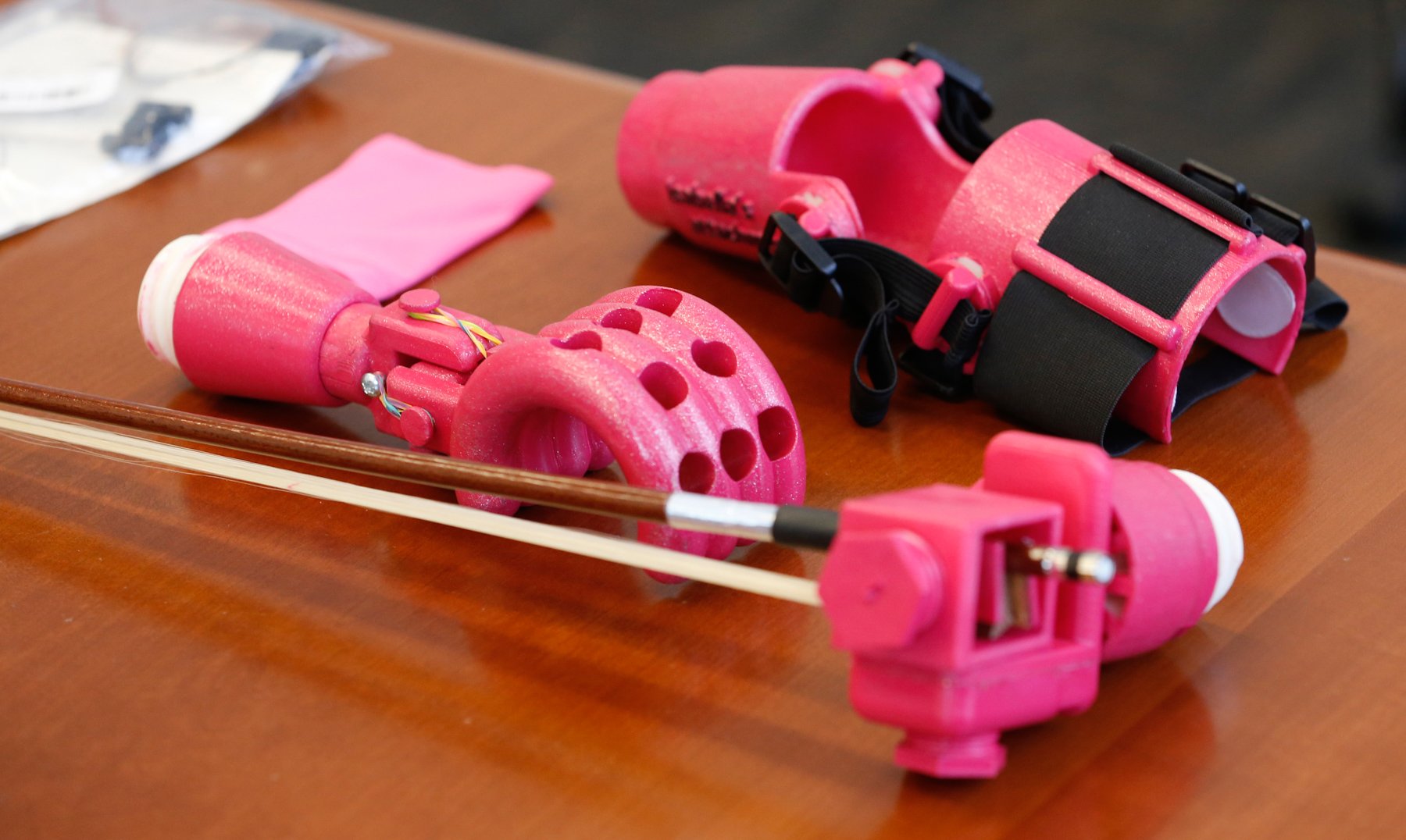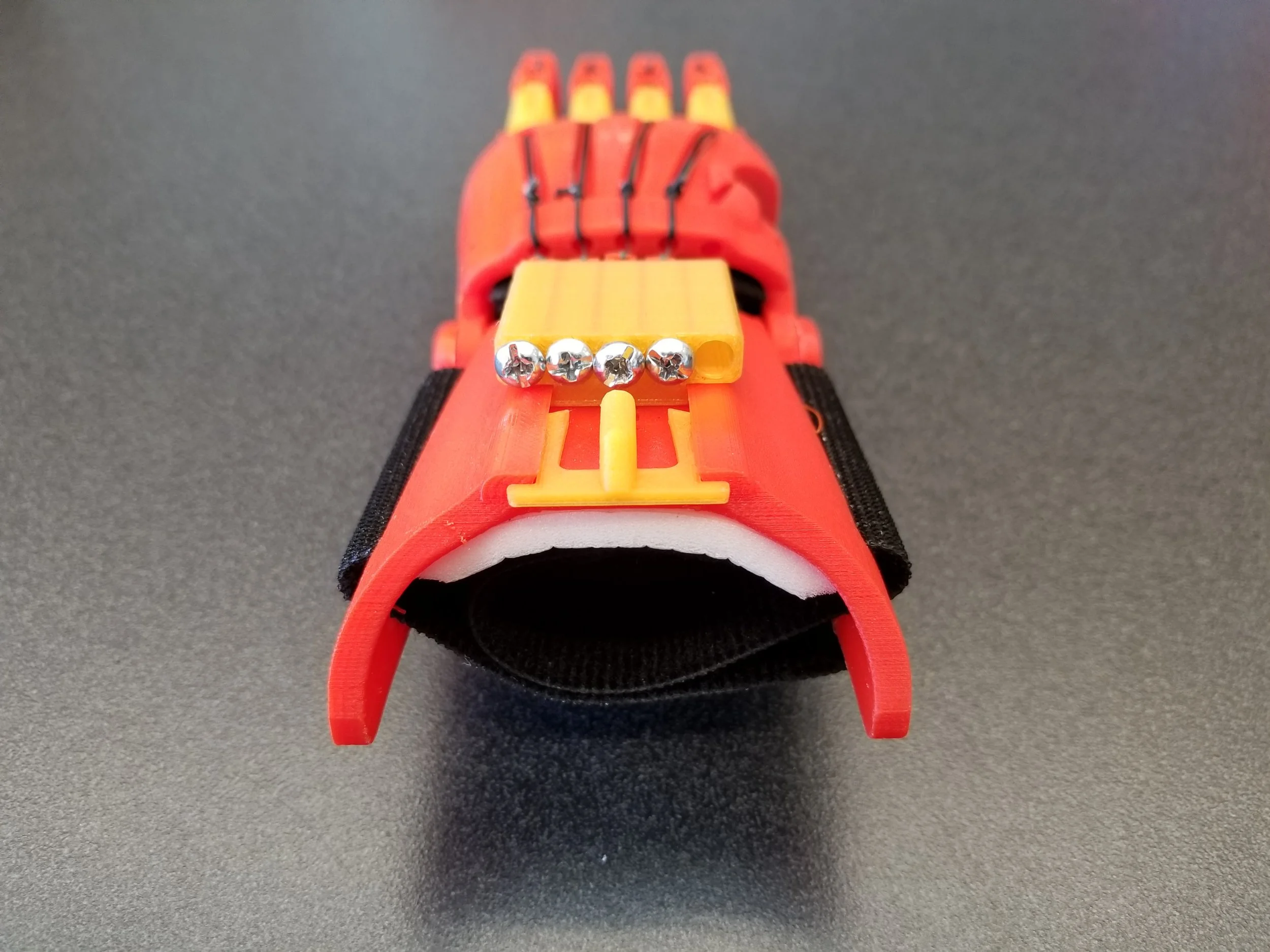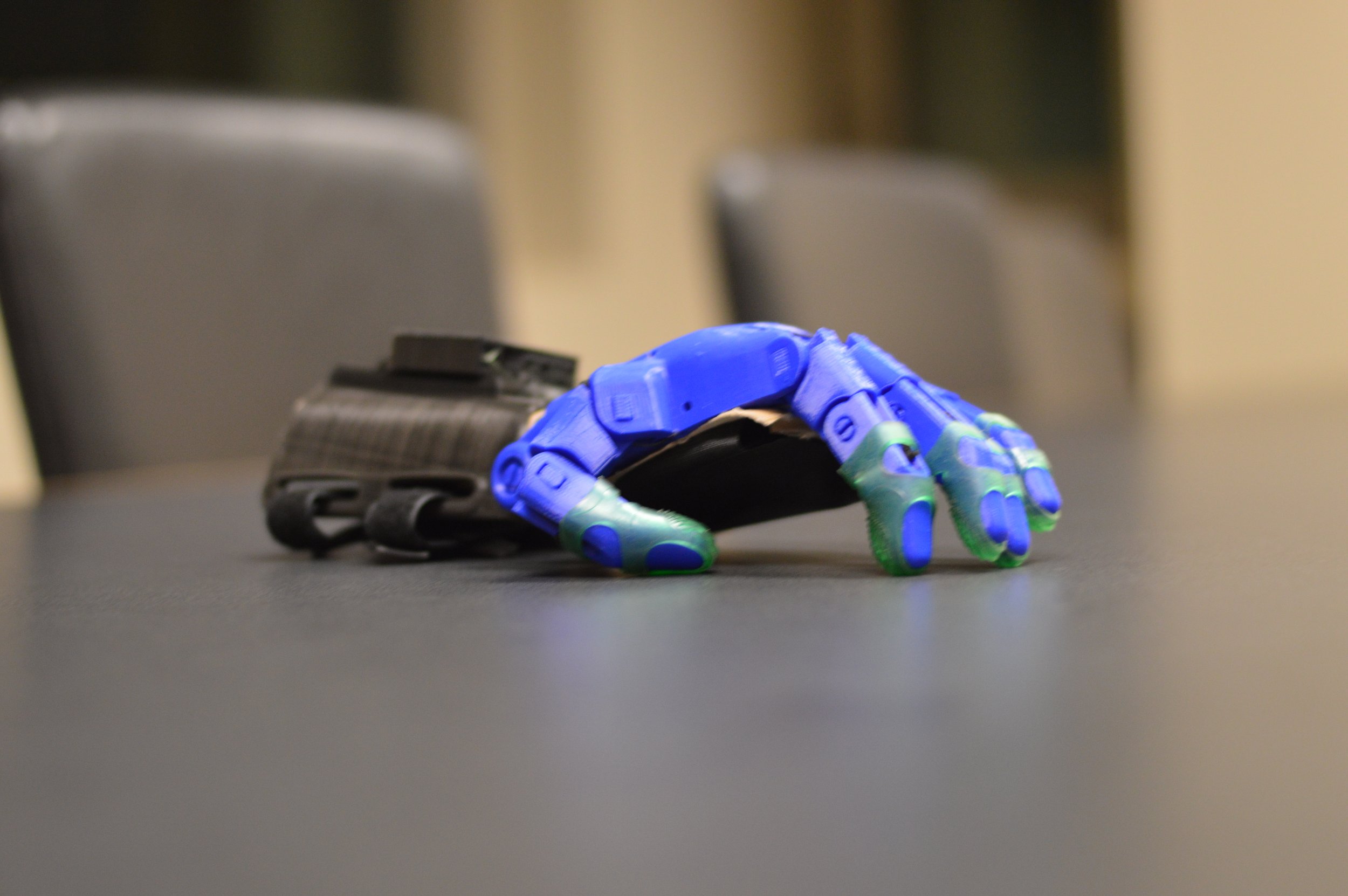Our Current Designs
-

Adapted Phoenix Hand
Team Lead: Emily Vroom
Overall Design Goal:
Our team is working to develop a device based off of a modification of the phoenix hand design. We are hoping to add custom features to the device to make it unique based on the user’s preferences. Our team is made up of a variety of different majors to add different perspectives on the best design for the device. Through our collaboration, we are hoping to finish the design of the device by the end of the semester. We are excited to work on this project and can’t wait for the hand to get sent out!
-

Adapted Phoenix Hand
Team Lead: Jakob Halbur
Overall Design Goal:
We are designing a modified Phoenix hand for a member of our organization. So far we have removed the bottom mesh, created a hole for her thumb, and shifted the pin connector over to accommodate for greater wrist space.
-

Adapted Phoenix Hand
Team Lead: Preethi
Our project goal is to give back elbow actuated function to a young girl. With her being very young, mobility, strength, and ease of use are key criteria we used when creating our design. This led to a full hand design modeled after the Phoenix Hand attached with a Velcro adhesion system.
-

Monkey Bars Assistive Device
Team Lead: Gavin Drumm
Overall Design Goal:
We aim to research how to make 3D-printed devices as strong as possible, and then utilize these innovations to create devices suitable for high-stress activities such as heavy lifting and pulling. We focus mainly on using the geometry of our designs, printing orientation, and post-processing methods to increase the tensile strength of our prints. We also focus on making the device comfortable to wear, so that it does not create any unnecessary or excessive strain on the user. Currently, we are developing a prosthetic device for a specific person, who would like to use monkey bars. We are working on applying the knowledge gained from our research to make a safe, comfortable, and usable device for them to use.
-

Digit Design
Team Lead: Alyssa Young
Overall Design Goal:
We are working to optimize the design of the fingers; so far we have three different design styles and this semester we will innovate to find the best design to be implemented in standard hands!
-

Adapted Phoenix Hand
Team Lead: Jil
Overall Design Goal:
Modifying a new design for a more flexible hand to fit the user’s upper limb difference. Additionally, the hand will also showcase cool designs and feature that the user requested.
-

Adapted Phoenix Hand
Team Lead: Avery Murray
Overall Design Goal:
Our team is dedicated to creating a custom 3D-printed Phoenix Hand. We designed a prosthetic hand that incorporates a thumb, pointer, and middle finger. This device is designed to give the appearance of a full hand, helping the user feel more comfortable and confident.
We aimed to make the device unique. The design is customized with designs and colors specific to the users preferences. We have successfully completed the final print of the left hand and have just printed our first draft of the right hand. Through this project, we strive to make a device that brings the user joy and confidence in their everyday activities.
-

Adapted Phoenix Hand
Team Lead: Spencer
Overall Design Goal:
Using electromechanical components, including circuits, motors, actuators in addition to CAD to create an electronic and 3D printed device for a user’s upper limb difference.
-

Case Team Manager
Manager: Ethan Jones
Goals of Case Design:
As the Case Design Team of The Helping Hands Project at NC we take pride in researching, developing, and assembling custom recreational prosthetic devices for the upper limb difference community. Case Teams work hard to provide devices for those who may not be able to afford it, or those who want a fun, personalized device. Our mission is to support the limb difference community through engineering, design, and innovation. The Case Design Team focuses both on individual devices for recipients, as well as research and development of specialized task-based devices that may be offered in the future. Through our designs and devices, we hope to make a difference in raising awareness and support for the limb difference community.












